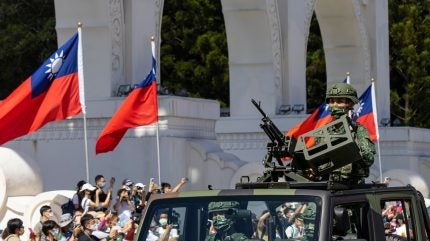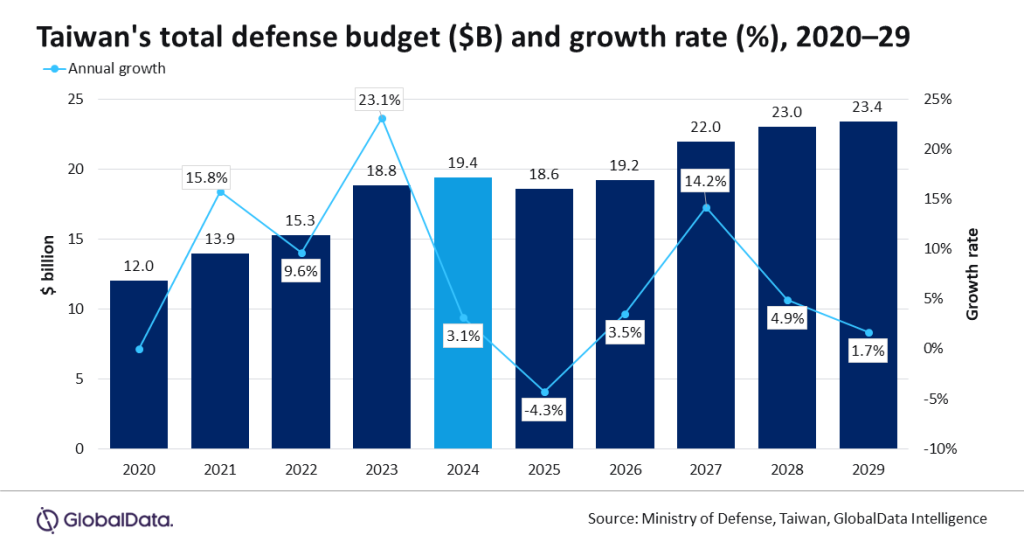
Taiwan is projected to increase its defence budget to $23.4bn (T$752.5bn) by 2029 in response to escalating military pressure from China.
This increase is part of a broader effort to modernise Taiwan’s military capabilities and prepare for potential aggression.
As recently as 29 August 2024, the China’s Ministry of National Defence has reaffirmed its claim that Taiwan is a part of its territory, and China continues to apply military pressure through missile tests and the deployment of aircraft and naval vessels near Taiwan’s borders. In response, Taiwan is focusing on building a battle-ready armed force to defend itself.

According to a report by GlobalData, ‘Taiwan Defense Market Size, Trends, Budget Allocation, Regulations, Acquisitions, Competitive Landscape and Forecast to 2029’, Taiwan’s defence expenditure, including additional special budgets, grew from $12bn in 2020 to $19.4bn by 2024. This reflects a compound annual growth rate (CAGR) of 12.7%, driven by the need to fund key arms acquisition programmes.
The report highlights that between 2020 and 2024, Taiwan’s cumulative defence spending reached $79.5bn, with $10.5bn allocated to acquisition programmes. These funds supported the procurement of key military assets, including Hai Kun-class submarines, F-16V aircraft, and 2,500-ton light frigates.
Taiwan’s evolving defence strategy includes a focus on asymmetric warfare, often referred to as the “porcupine doctrine.” This strategy relies on intelligence gathering, reconnaissance, and leveraging geographic advantages to defend against potential Chinese aggression.
“To build its arsenal of weapons and military fleet, Taiwan relies on US assistance to procure advanced defence technologies,” noted Akash Pratim Debbarma, an aerospace and defence analyst at GlobalData.
“For instance, Taiwan’s ongoing procurement of the RGM-84L-4 Harpoon Block-II Coastal Defence Systems and the planned procurement of the National Advanced Surface-to-Air Missile System (NASAMS) from the US will help in securing its coast and establish a long-range and multi-domain deterrence mechanism against China,” continued Debbarma.
A critical part of Taiwan’s defence planning involves advanced early-warning systems and sophisticated weaponry, alongside a reserve force that is ready to be mobilised. This approach highlights the emphasis on a robust defensive posture amid regional tensions.
Looking ahead, Taiwan is likely to seek more indigenous defence solutions. This shift is partly driven by a perceived reduction in US focus on Asia, as attention shifts towards Europe due to the ongoing conflict in Ukraine.







